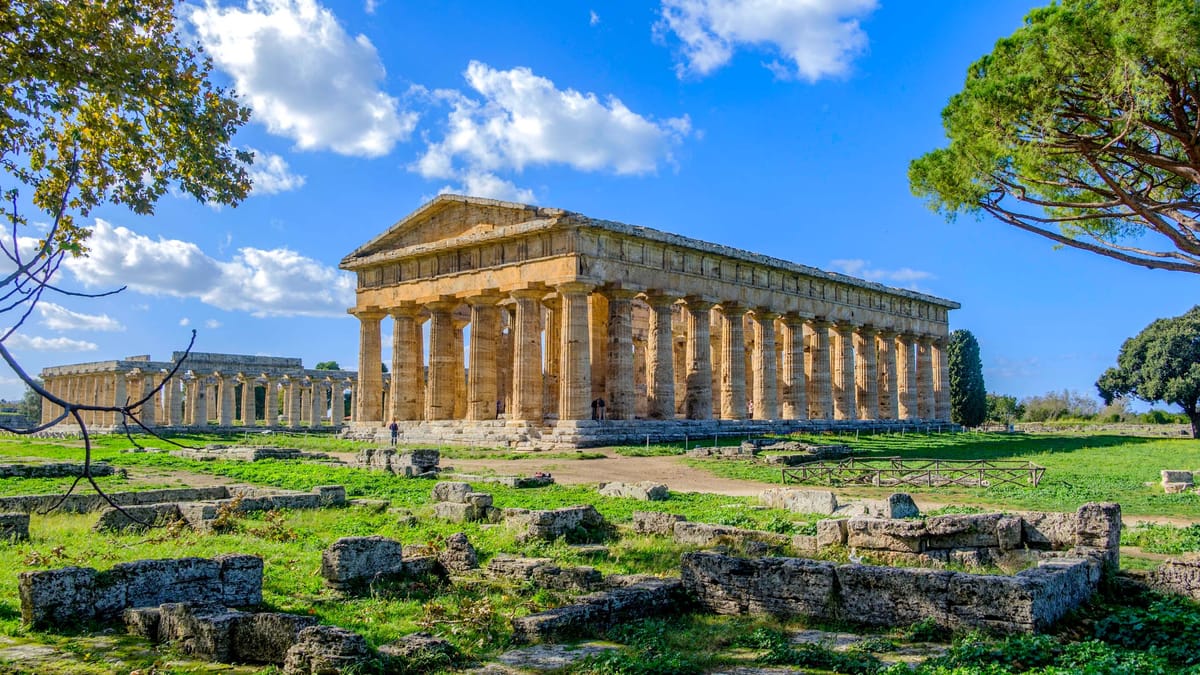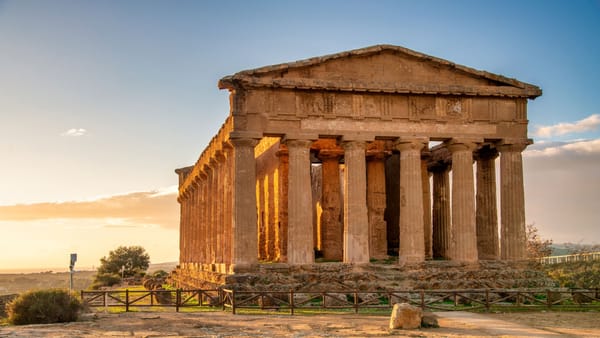Awakening the Ancient Past
The sun had barely begun to rise over the ancient city of Naples, casting a warm golden light over the rooftops and narrow streets. The city was still half-asleep, with only the early risers stirring to life. But in a quiet corner near the old port, "Diario 500," a bright blue Fiat 500, was wide awake and humming with excitement. Today, it has marked the beginning of a memorable journey—one that would delve deep into the rich Greek heritage of Southern Italy.
Though best known today for its Roman history, Southern Italy was once a land where Greek culture thrived. Here, ancient Greeks established some of their most prosperous colonies, leaving a legacy that would influence the region for millennia. This journey, a tribute to that legacy, would take "Diario 500" through the historic sites and remnants of Magna Graecia—the "Great Greece"—a term the Romans later used to describe these flourishing Greek colonies.
"Diario 500" had always felt a deep connection to history, as if its small engine was fueled by gasoline and past stories. As it set out from Naples, the car was eager to explore the ruins, temples, and ancient cities that bore witness to a time when Southern Italy was a crucial part of the Greek world.
The first destination on this journey was Cumae, an ancient city just outside Naples. Founded by Greek settlers from Euboea in the 8th century BC, Cumae is one of the oldest Greek colonies on the Italian mainland. The city played a significant role in the spread of Greek culture and language throughout Italy, and it was here that "Diario 500" would start its journey into the heart of Magna Graecia.
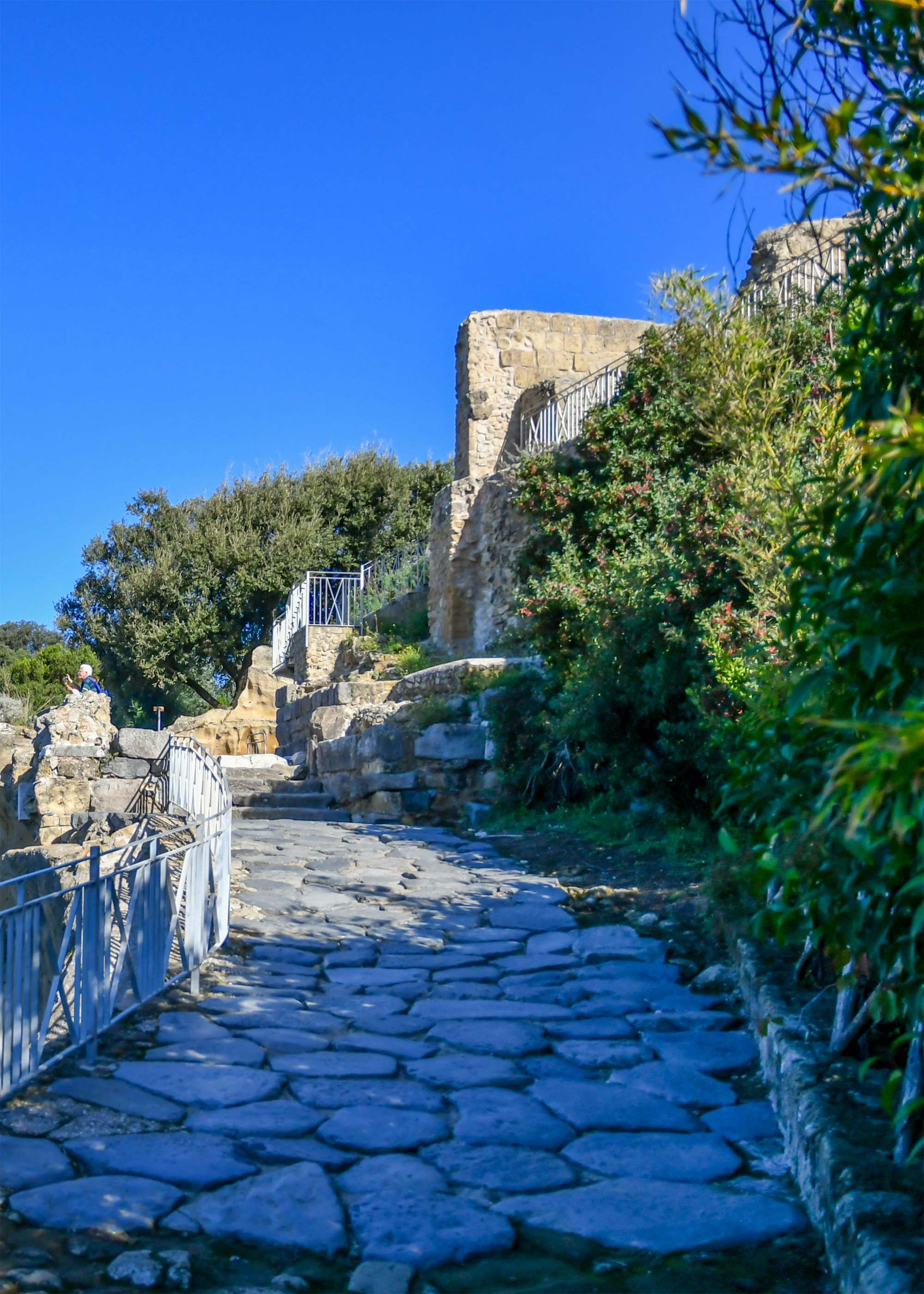
As "Diario 500" cruised along the coastal road, the scent of the sea filled its cabin, mingling with the warmth of the morning sun. The car’s engine purred contentedly as it approached the entrance to the archaeological site. The ancient ruins of Cumae stood on a hill overlooking the sea, their weathered stones bathed in the soft light of dawn.
Parking at the foot of the hill, "Diario 500" gazed up at the site with reverence. This was where the ancient Greeks had walked, built their temples, and consulted the famed Cumaean Sibyl, a prophetess believed to have communicated the gods' will.
The car followed the winding path up the hill, passing by the remains of ancient walls and temples. At the top, it reached the entrance to Sibyl’s cave, a dark, mysterious tunnel carved into the rock. According to legend, the cave was the dwelling place of Sibyl, who would utter her cryptic prophecies from deep within its recesses.
Though the cave was too narrow for "Diario 500" to enter, the car felt chilly as it peered into the darkness. The sense of history here was almost tangible as if the whispers of the past still lingered in the shadows. This was where the ancient Greeks sought guidance and wisdom, a place crucial to the colony's spiritual life.
Leaving the cave behind, "Diario 500" rolled through the ruins of the ancient city, passing by the remains of the Temple of Apollo, where the Greeks had worshipped the god of prophecy and music. Though weathered and broken, the temple's columns still stood proudly against the sky, a testament to the enduring legacy of Greek architecture.
As the sun climbed higher, "Diario 500" knew it was time to move on. The journey had only begun, and there were many more places to explore, each with its own story. With a final glance at the ruins of Cumae, the car set off toward its next destination: the city of Paestum, home to some of the most well-preserved Greek temples in the world.
The Majestic Temples of Paestum
The road to Paestum was scenic, winding through the Campania region's rolling hills and fertile plains. As "Diario 500" traveled south, the landscape gradually transformed from urban sprawl to rural serenity, with fields of wheat, olive groves, and vineyards stretching out as far as the eye could see.
Paestum, originally known as Poseidonia, was founded by Greek settlers from Sybaris around 600 BC. The city was named after Poseidon, the god of the sea, and quickly became one of the most important cities in Magna Graecia. Today, Paestum is best known for its three magnificent Doric temples, among the best-preserved Greek temples outside Greece.
As "Diario 500" approached the site, the car could see the temples rising above the landscape, their massive columns casting long shadows in the afternoon sun. The first temple that came into view was the Temple of Hera, the oldest of the three, dating back to around 550 BC. The temple, with its sturdy columns and imposing pediment, was a masterpiece of Greek architecture, a symbol of the power and influence of the gods.
"Diario 500" parked at the edge of the site, near the ancient city walls, and rolled closer to the temples, taking in their grandeur. The car felt a sense of awe as it gazed up at the Temple of Hera, imagining the rituals and ceremonies that had taken place here over two thousand years ago. The temple was dedicated to Hera, the queen of the gods, and would have been the center of religious life in ancient Paestum.
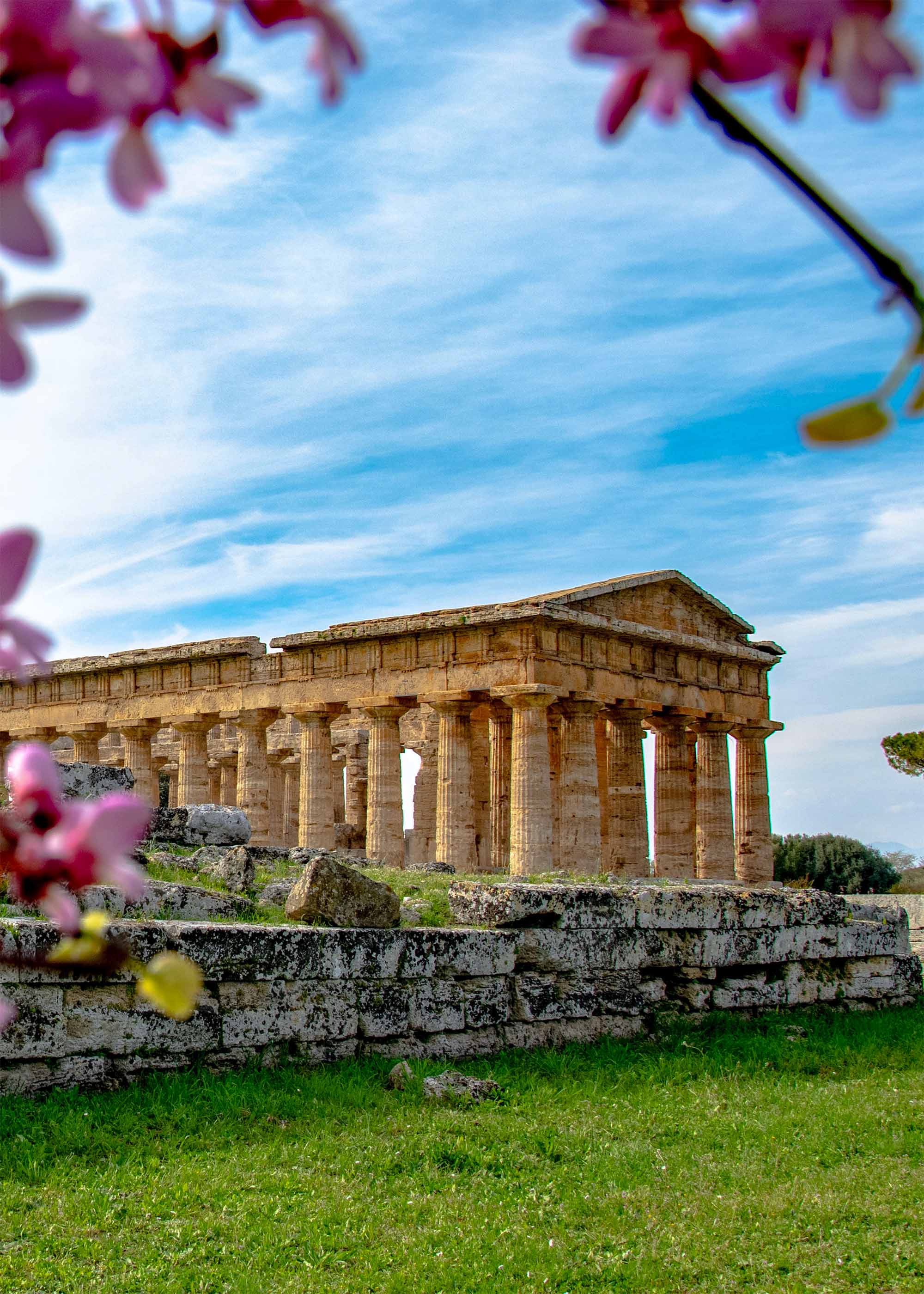
Next, "Diario 500" moved on to the Temple of Athena, which stood on a slight rise in the center of the site. Built around 500 BC, the Temple of Athena was smaller than the Temple of Hera but no less impressive. The car admired the temple’s elegant proportions and the intricacy of its design, marveling at the skill of the ancient architects who had created such a timeless structure.
Finally, "Diario 500" made its way to the Temple of Neptune, the largest and most imposing of the three temples. The Temple of Neptune, also known as the Temple of Poseidon, was built around 460 BC and is considered one of the finest examples of Doric architecture worldwide. The massive columns of the temple, each over eight meters tall, were perfectly proportioned, creating a sense of harmony and balance that was quintessentially Greek.
As "Diario 500" rolled slowly around the temple, it could feel the power and majesty of the structure. This was where the ancient Greeks had worshipped their gods, sought to understand their place in the cosmos, and built monuments that would stand the test of time. The car felt a deep connection to this place, as if the spirit of the ancient Greeks still lingered in the air, inspiring awe and reverence in all who visited.
With the sun beginning to set, casting a warm golden light over the ruins, "Diario 500" knew it was time to move on. The journey was far from over, and there were still many more places to explore. As the car left Paestum behind, it felt a sense of fulfillment, knowing it had witnessed one of the most outstanding achievements of Greek civilization.
The next destination on the journey was the region of Calabria, where the city of Sybaris had once stood—a city famed for its wealth, luxury, and influence in the ancient world.
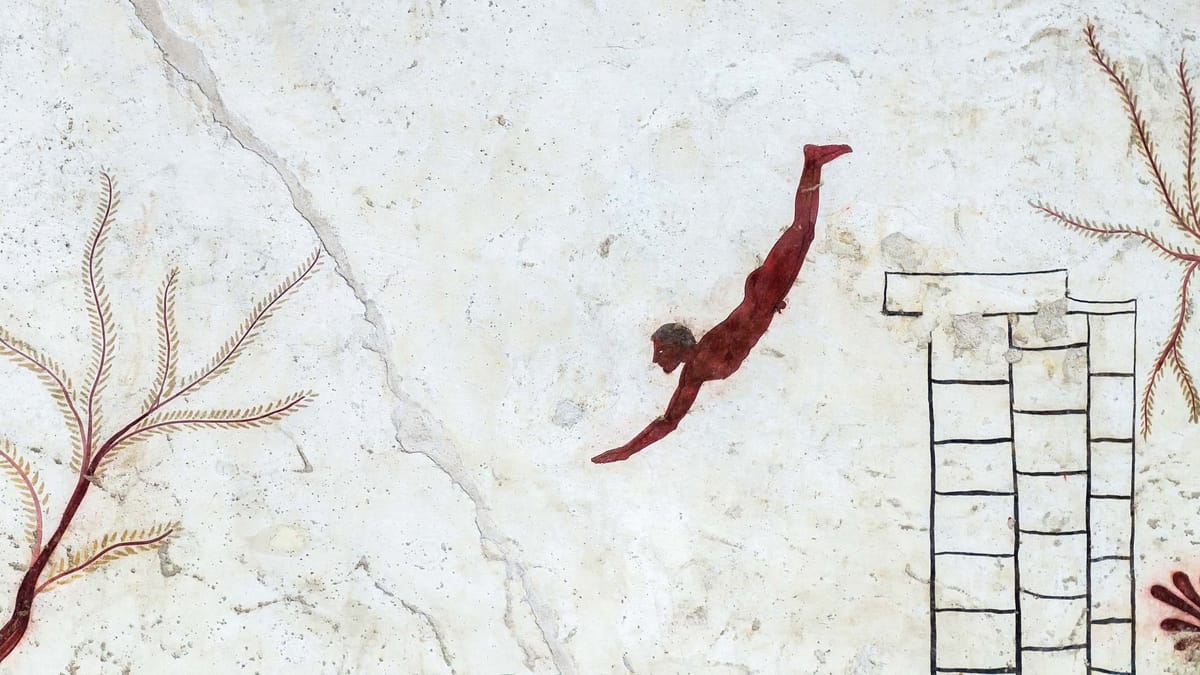
The Lost City of Sybaris
Calabria, the toe of Italy’s boot, is a land of rugged mountains, pristine beaches, and ancient cities that once played a crucial role in the history of Magna Graecia. In the fertile plains near the Gulf of Taranto, it was here that the ancient city of Sybaris flourished.
Founded around 720 BC by Greek settlers from Achaea, Sybaris quickly became one of the wealthiest and most influential cities in Magna Graecia. The city was known for its opulence and luxury, and its citizens were said to live in such comfort that the term “Sybaritic” came to be synonymous with indulgence and excess. However, the city’s wealth also made it a target for its rivals, and in 510 BC, Sybaris was destroyed by the neighboring city of Croton.
Today, the ruins of Sybaris lie buried beneath layers of earth and sediment, forgotten by time and the outside world. But "Diario 500" was determined to uncover the secrets of this lost city, to explore the remnants of a civilization that had once been the envy of the ancient world.
The road to Sybaris took "Diario 500" through the heart of Calabria, past rolling hills and olive groves, and into the vast, fertile plain that stretched out towards the sea. The landscape was peaceful, with the sound of cicadas filling the air and the scent of wildflowers drifting on the breeze. But as the car approached the ancient city site, there was a sense of anticipation in the air, as if the land was holding its breath, waiting to reveal its secrets.
The ruins of Sybaris were not as grand as those of Paestum, but they were no less significant. The city had been lost for centuries, buried by the sediment of the Crati River, and it was only in the 1960s that archaeologists began to uncover its remains. Today, the site is a vast archaeological park, with the outlines of ancient streets, houses, and public buildings faintly visible beneath the earth.

"Diario 500" parked at the park's entrance and began to explore the site, its wheels rolling over the ancient cobblestones. The car could see the remains of the city’s defensive walls, the foundations of houses, and the remnants of public buildings that had once stood at the heart of Sybaris. Though much of the city was still buried, there was enough here to give a sense of the grandeur that had once characterized this place.
As "Diario 500" rolled through the site, it could almost hear the sounds of the ancient city—the voices of the merchants in the marketplace, the laughter of children playing in the streets, and the music of the lyres and flutes that would have filled the air during festivals and celebrations. The car imagined the citizens of Sybaris, dressed in fine clothes, reclining on couches as they enjoyed lavish banquets, surrounded by the luxuries their wealth had afforded them.
But there was also a sense of melancholy here, a reminder of the city’s tragic fate. The destruction of Sybaris by the forces of Croton had been swift and brutal, and the city that had once been the jewel of Magna Graecia was reduced to ruins in a matter of days. The wealth and luxury that had defined Sybaris had been its downfall, and the city’s name became a cautionary tale in the annals of history.
As the sun began to set, casting long shadows over the ruins, "Diario 500" knew it was time to move on. The journey was not over; there were still more places to explore and more stories to uncover. With a final glance at the lost city of Sybaris, the car set off again, this time heading towards the island of Sicily, where the city of Syracuse awaited.
The Glory of Syracuse
Sicily, the largest island in the Mediterranean, has long been a crossroads of civilizations, where Greek, Roman, Arab, and Norman cultures have all left their mark. However, the ancient Greeks first transformed the island into a center of power and culture, founding cities that would become some of the most important in the ancient world. Among these cities, Syracuse stood out as the most magnificent—a city that was once the rival of Athens and Rome, a city where philosophy, art, and science flourished.
The car could feel the excitement building as "Diario 500" crossed the Strait of Messina and approached Syracuse. This was a city that had been home to some of the greatest minds of the ancient world—a city where the mathematician Archimedes had made his discoveries, where the playwright Aeschylus had staged his tragedies, and where the philosopher Plato had sought to create his ideal state.
The road to Syracuse wound through the rolling hills of eastern Sicily, past vineyards and citrus groves, and finally descended towards the coast, where the city lay nestled against the azure waters of the Ionian Sea. The city’s skyline was dominated by the ancient fortress of Ortygia, its stone walls rising majestically above the harbor.
"Diario 500" crossed the bridge to Ortygia, the ancient heart of Syracuse, where the streets were lined with baroque palaces, ancient temples, and bustling markets. The car made its way to the Piazza del Duomo, where the Cathedral of Syracuse stood proudly at the center of the square. The cathedral, built on the site of an ancient temple to Athena, was a perfect example of the city’s layered history, with its Greek, Roman, and Christian elements all coming together in a harmonious blend of styles.
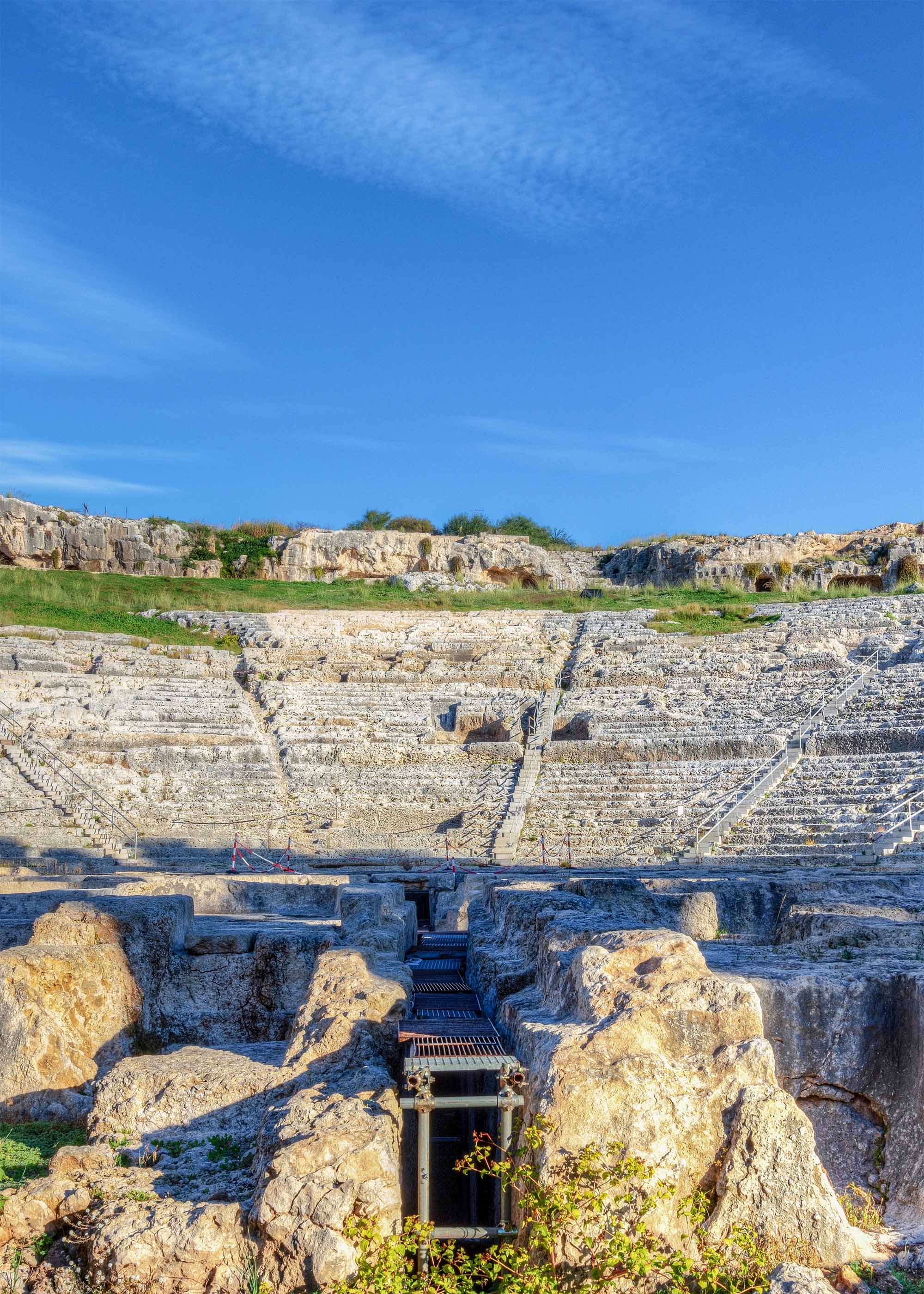
But it was the ancient Greek theater of Syracuse that "Diario 500" had come to see. The theater, built into the side of a hill overlooking the city, was one of the largest and most impressive theaters in the ancient world, with a capacity of over 15,000 spectators. As "Diario 500" approached the site, the car could see the tiers of stone seats rising the hillside, their smooth surfaces worn by centuries of use.
Parking at the edge of the site, "Diario 500" rolled slowly through the theater, its tires gently bumping over the ancient stones. The car could almost hear the echoes of the past—the voices of the actors reciting lines from the tragedies of Sophocles and Euripides, the applause of the audience as they watched the dramas unfold on the stage, and the cries of the vendors selling wine and snacks to the spectators.
The theater was more than just a place of entertainment; it was a place of learning where the citizens of Syracuse came to engage with the great ideas of the age. Here, the people of Syracuse would have watched the tragedies and comedies that explored the most profound questions of human existence—questions of fate, morality, and the nature of the gods.

As the sun began to set, casting a warm golden light over the theater, "Diario 500" knew it was time to move on. The journey had taken the car through the heart of Magna Graecia, from the ancient colonies of the mainland to the great city of Syracuse, where the Greek legacy was still alive and thriving.
But there was one final destination on the journey, one last place to visit before the car’s odyssey ended. With a sense of anticipation, "Diario 500" set off again, this time heading towards the Valley of the Temples in Agrigento, where some of the most spectacular Greek ruins in the world awaited.
The Valley of the Temples
The road to Agrigento took "Diario 500" across the rolling hills of central Sicily through a wild and beautiful landscape. The car passed through small towns and villages, where the pace of life seemed to have changed little over the centuries, and finally descended towards the coast, where the Valley of the Temples lay nestled among the olive groves and vineyards.
The Valley of the Temples, a UNESCO World Heritage site, is home to some of the best-preserved Greek temples outside Greece. The site was once the heart of the ancient city of Akragas, one of the most influential and prosperous cities in Magna Graecia. Today, the temples stand as a testament to the city’s former glory, their massive columns rising majestically against the backdrop of the Sicilian sky.
As "Diario 500" approached the site, the car could see the temples rising in the distance, their stone walls glowing in the warm light of the setting sun. The first temple that came into view was the Temple of Concordia, the best-preserved of the temples, with its 34 columns still standing in perfect harmony. The temple, built around 440 BC, was a masterpiece of Doric architecture, a symbol of the power and influence of the gods.
"Diario 500" parked at the edge of the site and rolled slowly through the valley, taking in the grandeur of the temples. The car passed by the remains of the Temple of Juno perched on a hill overlooking the valley and the Temple of Heracles, with its massive columns still standing proudly despite the ravages of time.
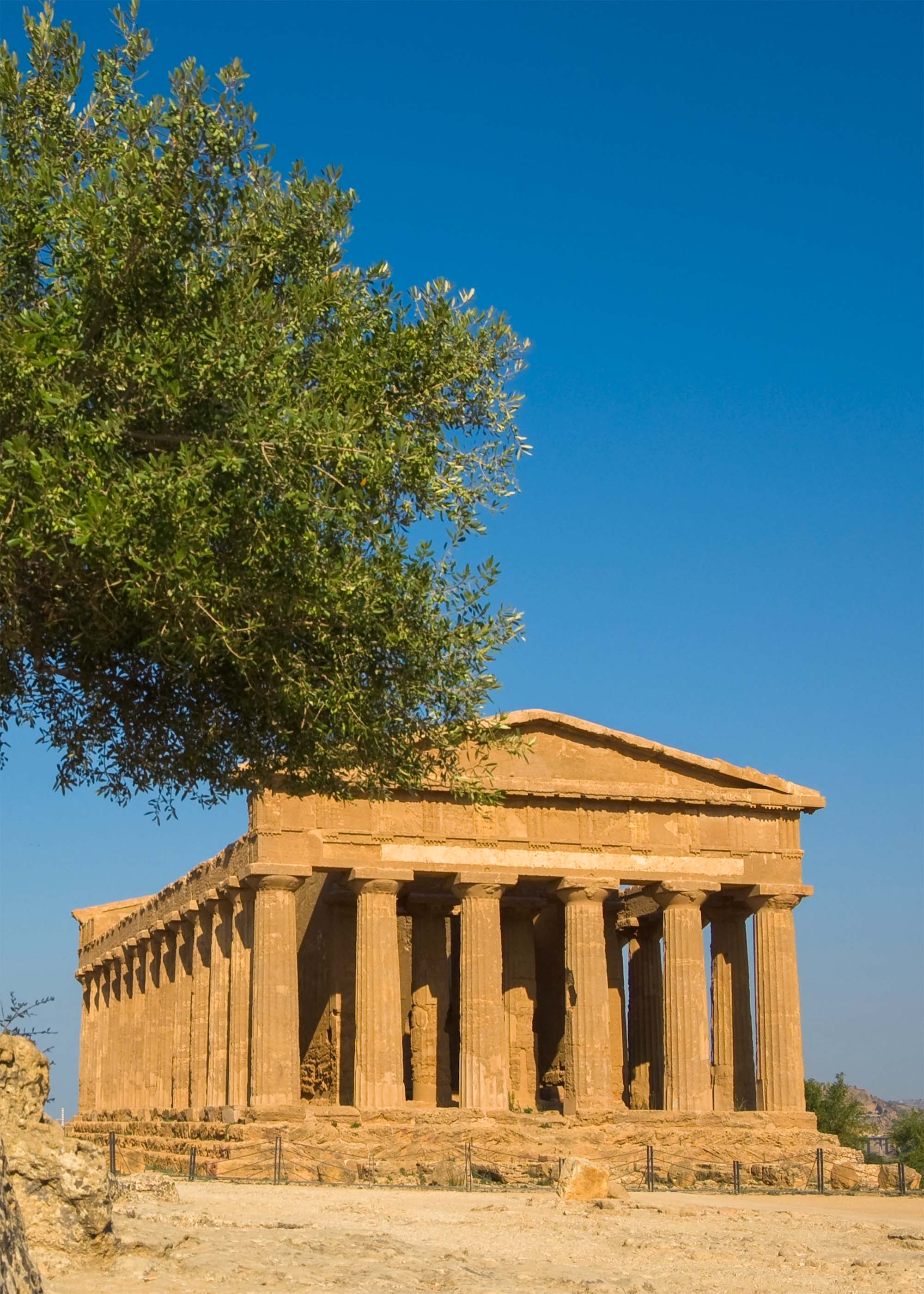
But the Temple of Zeus, the largest of the temples, indeed took the car’s breath away. Though now in ruins, the temple was once one of the most magnificent structures in the ancient world, with its massive columns and towering statues of Atlas holding up the roof. The car could hardly imagine the scale of the temple in its heyday when it would have dominated the landscape, a symbol of the power of the gods and the might of the city of Akragas.
As the sun began to set, casting long shadows over the temples, "Diario 500" knew the journey was ending. The car had traveled through the heart of Magna Graecia, exploring the remnants of a civilization that had shaped the history of Southern Italy and left an indelible mark on the region.
With a final glance at the temples, "Diario 500" set off again, heading back towards Naples, where the journey had begun. The car felt a sense of fulfillment, knowing that it had witnessed some of the most outstanding achievements of Greek civilization and had paid tribute to the enduring legacy of Magna Graecia.

As the car crossed the mountains of Sicily and returned to the mainland, the stars twinkled in the sky above, casting a soft glow over the landscape. The journey was over, but the memories would last a lifetime, a testament to the power of history and the enduring beauty of Southern Italy.
And so, with the ancient ruins of Magna Graecia fading into the distance, "Diario 500" drove on, its engine humming softly as it carried the stories of the past into the future.

